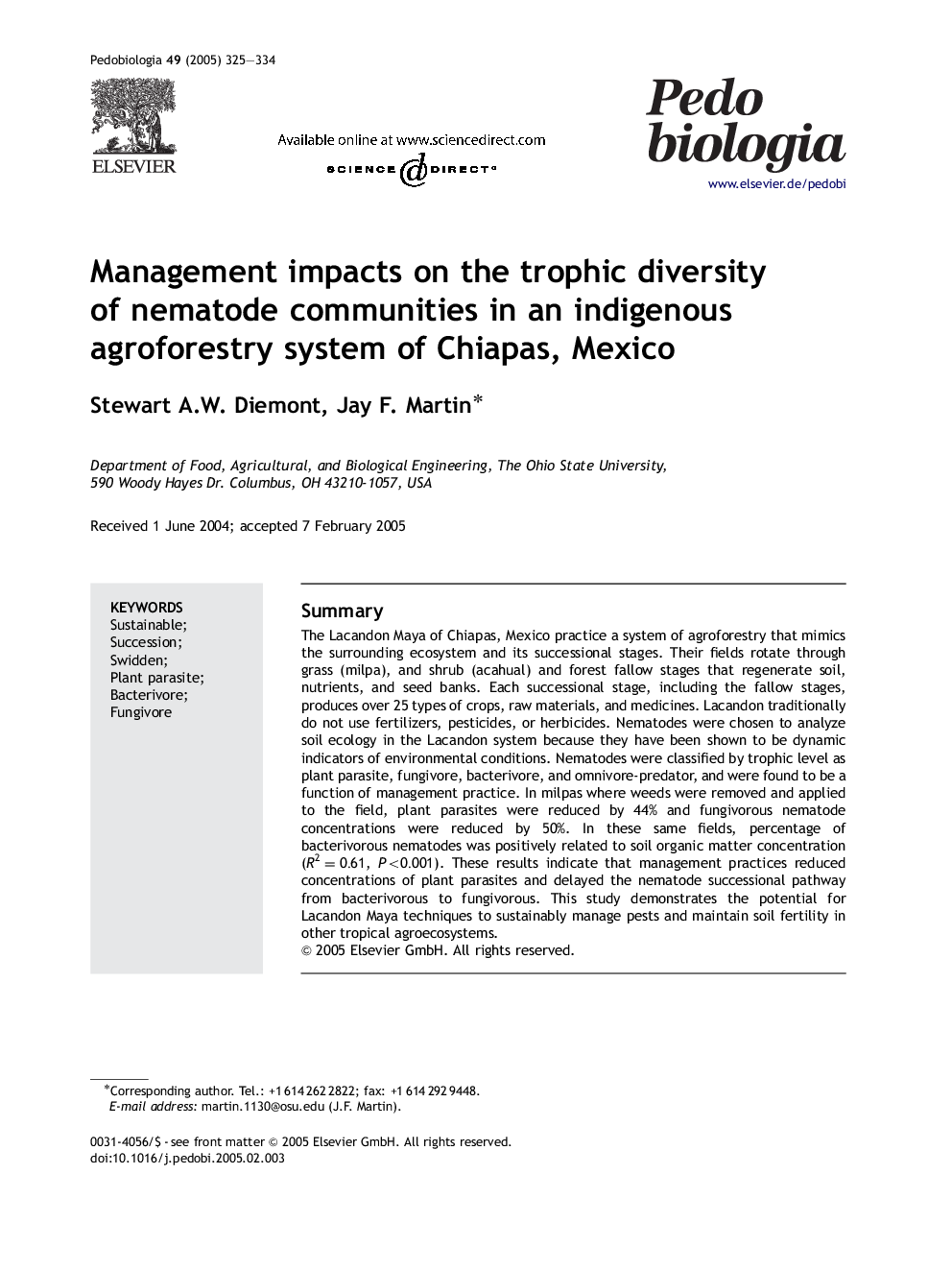| Article ID | Journal | Published Year | Pages | File Type |
|---|---|---|---|---|
| 10878701 | Pedobiologia | 2005 | 10 Pages |
Abstract
The Lacandon Maya of Chiapas, Mexico practice a system of agroforestry that mimics the surrounding ecosystem and its successional stages. Their fields rotate through grass (milpa), and shrub (acahual) and forest fallow stages that regenerate soil, nutrients, and seed banks. Each successional stage, including the fallow stages, produces over 25 types of crops, raw materials, and medicines. Lacandon traditionally do not use fertilizers, pesticides, or herbicides. Nematodes were chosen to analyze soil ecology in the Lacandon system because they have been shown to be dynamic indicators of environmental conditions. Nematodes were classified by trophic level as plant parasite, fungivore, bacterivore, and omnivore-predator, and were found to be a function of management practice. In milpas where weeds were removed and applied to the field, plant parasites were reduced by 44% and fungivorous nematode concentrations were reduced by 50%. In these same fields, percentage of bacterivorous nematodes was positively related to soil organic matter concentration (R2=0.61, P<0.001). These results indicate that management practices reduced concentrations of plant parasites and delayed the nematode successional pathway from bacterivorous to fungivorous. This study demonstrates the potential for Lacandon Maya techniques to sustainably manage pests and maintain soil fertility in other tropical agroecosystems.
Related Topics
Life Sciences
Agricultural and Biological Sciences
Animal Science and Zoology
Authors
Stewart A.W. Diemont, Jay F. Martin,
